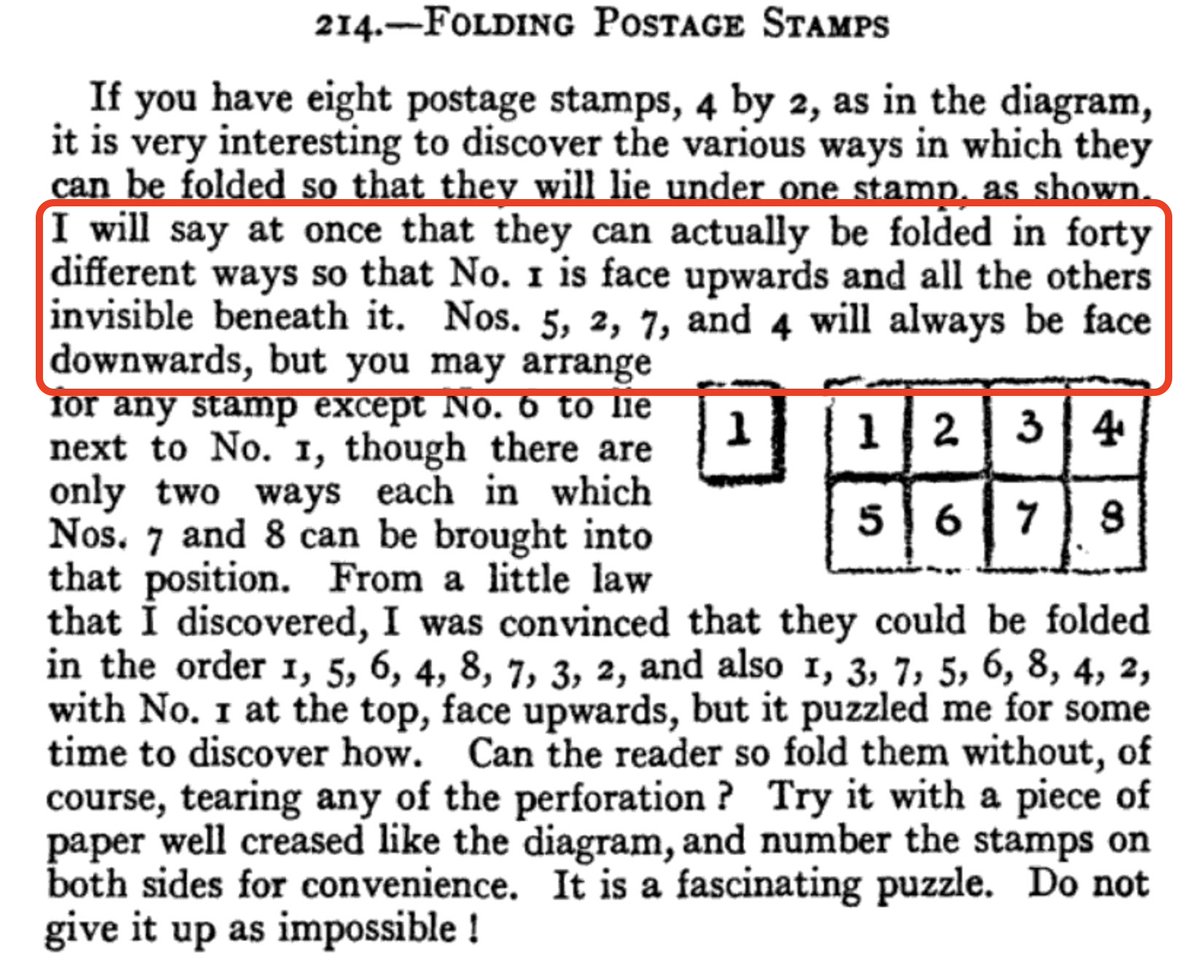Exploring a Puzzling Grid
This blog looks at the idea of folding a grid of squares along the dividing lines in any fashion, and how this idea was explored by Henry Dudeny and Martin Gardner. It explains how this idea can be used to create a handful of magic tricks.

Dave Richeson
Mathematician. John J. & Ann Curley Chair in Liberal Arts at Dickinson College. Author of Tales of Impossibility and Euler's Gem. Coffee drinker.

-
In his 1926 _Modern Puzzles_ Henry Dudeny mentions that if you take a folded grid of squares (like a red/black chess board) and fold it along the dividing lines in any fashion, then all the red squares will face up, say, and all the black squares will face down. [He actually
— Dave Richeson (@divbyzero) March 8, 2023
1/5 pic.twitter.com/MaqPROA9cF -
stated it only for the 2x4 case but it is true more generally.] In an addendum to one of his Scientific American columns, Martin Gardner takes this idea and riffs on it, suggesting a handful of magic tricks you can do based on this parity idea. Here's one example. Hand a
— Dave Richeson (@divbyzero) March 8, 2023
2/5 -
spectator a calendar. Tell them to rip out the page showing their birthday month. Then give them scissors and have them cut out any 4x4 grid of dates from that page. Let's say it is the square shown below. You write a number on a piece of paper and set it aside (your
— Dave Richeson (@divbyzero) March 8, 2023
3/5 pic.twitter.com/8V4OtSb0qi -
"prediction"). Next have them fold up their 4x4 grid in to a single square in any fashion they want. Then have them use the scissors to cut along all four edges so that they get 16 individual squares. Lay them out without flipping them (although they can flip the entire
— Dave Richeson (@divbyzero) March 8, 2023
4/5 -
stack if they want to). Your prediction is the sum of the face-up dates. In this case it is 144=4*(6+30). It will always be 4*(upper left value+lower right value).
— Dave Richeson (@divbyzero) March 8, 2023
5/5 -
I guess you could also do 8*(upper left number + 12) or 96+8*(upper left number).
— Dave Richeson (@divbyzero) March 8, 2023 -
Observation: If you know the person was born in February, it's not a leap year, and the month starts on Wed., Thurs., or Fri., then by choosing the right calendar (Sun-Sat or Mon-Sun), there's only one 4x4 grid. So you could write the prediction down before starting the trick.
— Dave Richeson (@divbyzero) March 9, 2023 -
Also, a quick way to compute the final sum is (8n-4)+100 where n is the upper left date.
— Dave Richeson (@divbyzero) March 9, 2023
